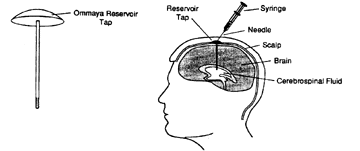Chemotherapy typically follows after radiosurgery to treat small cancerous tumors in the human brain. However, when the tumors are the result of Burkitt's Lymphoma, the disease is exponentially more serious and requires many more treatments. Burkitt's Lymphoma is a fast-growing cancer of the lymphatic system, specifically B-Cells (classifying it as a type of leukemia). All types of Burkitt's are associated with HIV and immunodeficiency. In fact, 90% of AIDS cases are complicated by an onset of Burkitt's.
In the types of Burkitt's encountered in North America, the cancer usually starts in the belly area (abdomen). The disease can also start in the ovaries, testes, brain, and spinal fluid. Swelling of the lymph nodes is the primary symptom of the condition.
 |
| http://lymphoma.about.com/od/nonhodgkinlymphoma/p/burkitts.htm | l | |
When diagnosed early, chemo can be extremely effective as a solution for Burkitt's ironically because of its naturally fast progression (the chemo progresses quickly when the cancer grows quickly). Patients treated with HAART (Highly Active Antiretroviral Therapy) for HIV, have a typically better chance for survival with Burkitt's lymphoma as well. These patients are basically being treated with a drug cocktail of sorts since HAART is defined as treatment with at least three active anti-retroviral medications (ARV’s).
The chemotherapy treatments are administered through a ventricular cathoder that is surgically inserted. It is a short surgery and an easy insertion into the third ventricle of the brain once the tumor is located via MRI scan. Surgeons implant what is called an Ommaya Resevoir for easy drug administration:
If the patient, however, has already developed carcinomatosis and has widespread cancerous lesions throught the body (as is often the result of lymphoma), the treatments are less effective.


"All types of Burkitt's are associated with HIV and immunodeficiency." Would you consider this statement true if considering sporadic Burkitt's?
ReplyDelete